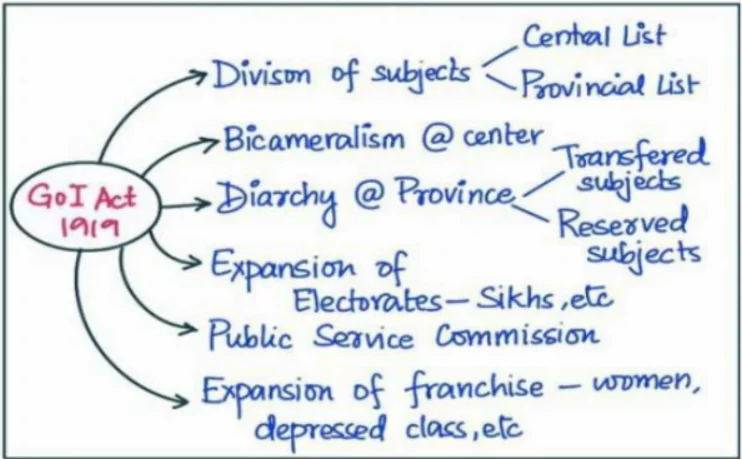![]() March 26, 2024
March 26, 2024
![]() 9440
9440
![]() 0
0
Montagu, the Secretary of State, arrived in India in Nov 1917 for consideration of reforms with Viceroy Lord Chemsford, eminent British civil servants and Indian politicians of all shades of opinion. A committee was formed – William Duke, Earl of Donoughmore, Bhupendra Nath Basu and Charles Robert which together with Viceroy- to help Montagu to prepare the draft of the reform scheme which was published in July 1918 and is called Montagu-Chelmsford Report. On the basis of this report, the Government of India Act 1919 was passed. The Act consisted of 47 sections and 5 schedules and was written in a legal style.

| Must Read | |
| Current Affairs | Editorial Analysis |
| Upsc Notes | Upsc Blogs |
| NCERT Notes | Free Main Answer Writing |
THE SIMON COMMISSION (1927)
COMMUNAL AWARD
|
Overall, the 1919 Government of India Act brought about important changes that increased Indian participation in governance, devolved power etc. While the Act fell short of full self-governance, it laid the foundation for future constitutional developments in India.
| Related Articles | |
| THE ENGLISH IN INDIA | GOVERNOR GENERAL OF BENGAL |
| AMENDING ACT OF 1781 | REGULATING ACT 1773 |
| WARREN HASTINGS: FIRST GOVERNOR GENERAL | SUPREME COURT |
<div class="new-fform">
</div>
Latest Comments